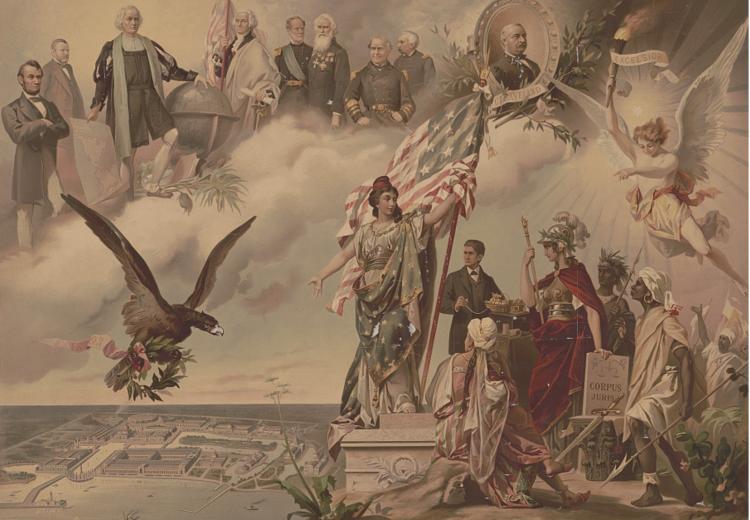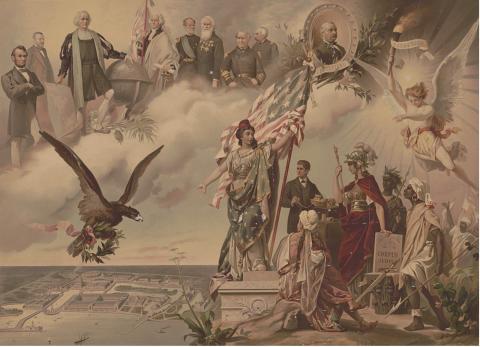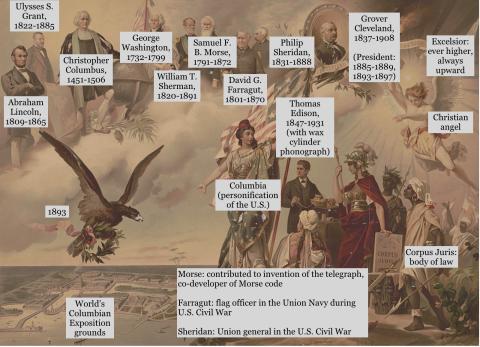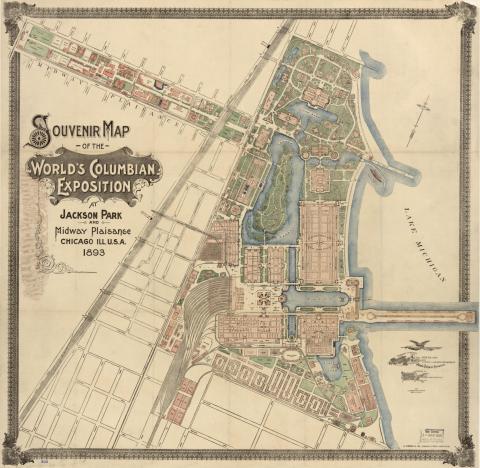A Spectrum of Perspectives: The Gilded Age and Progressive Era Through the Lens of the 1893 World’s Fair

Allegorical lithograph promoting the 1893 World's Columbian Exposition, Rodolfo Morgari, Milan, 1893.
On May 1, 1893, the World’s Columbian Exposition opened in Chicago. Also known as the 1893 Chicago World’s Fair, the six-month event was planned to commemorate the 400th anniversary of Christopher Columbus’s 1492 expedition to the Americas. Inspired by earlier national industrial expositions, the first modern world’s fair was held in London in 1851, kicking off a century-long string of grandiose world’s fairs. Expositions have continued through the present, though on a smaller scale. In the late nineteenth and early twentieth centuries, imperial nations held world’s fairs to show off their cultural, technological, and colonial accomplishments and to strengthen their commercial ties. The Columbian Exposition drew exhibitors and visitors from across the United States and around the world, totaling about 27 million admissions.
This lesson, based on primary source analysis, uses the 1893 Chicago World’s Columbian Exposition as an entry point to introduce debates and developments of the Gilded Age and Progressive Era. It addresses many themes and topics of the period, including sectional reconciliation after Reconstruction; the Panic of 1893; African American activism against segregation and oppression; women’s rights and suffrage; and colonialism, imperialism, and Indigenous resistance. The lesson positions students as historians and asks them to: 1. uncover the motives and messages of elite fair organizers, 2. analyze the diverse range of attitudes that Americans held toward the fair, and 3. explore methods for recovering the perspectives of Indigenous performers who were largely unable to document their experiences.
The corresponding teacher’s guide The 1893 World’s Fair and the First Ferris Wheel provides an overview of the exposition within the broader historical context of the Gilded Age and Progressive Era.
Guiding Questions
What does the World’s Columbian Exposition reveal about the United States in the 1890s?
How do we make sense of the meaning and significance of the World’s Columbian Exposition, considering multiple historical perspectives?
How did people protest and resist unfair treatment and representation at the World’s Columbian Exposition?
What can primary sources tell us about the experiences of people who did not leave behind their own written documents?
Learning Objectives
Examine the goals and symbolism of the World’s Columbian Exposition within the broader context of American history.
Analyze primary sources such as prints, photographs, speeches, and newspaper articles.
Compare competing perspectives on the experience and meaning of the World’s Columbian Exposition.
Identify missing or marginalized perspectives within the documentary record.
Evaluate primary sources for evidence of Indigenous agency and resistance.



